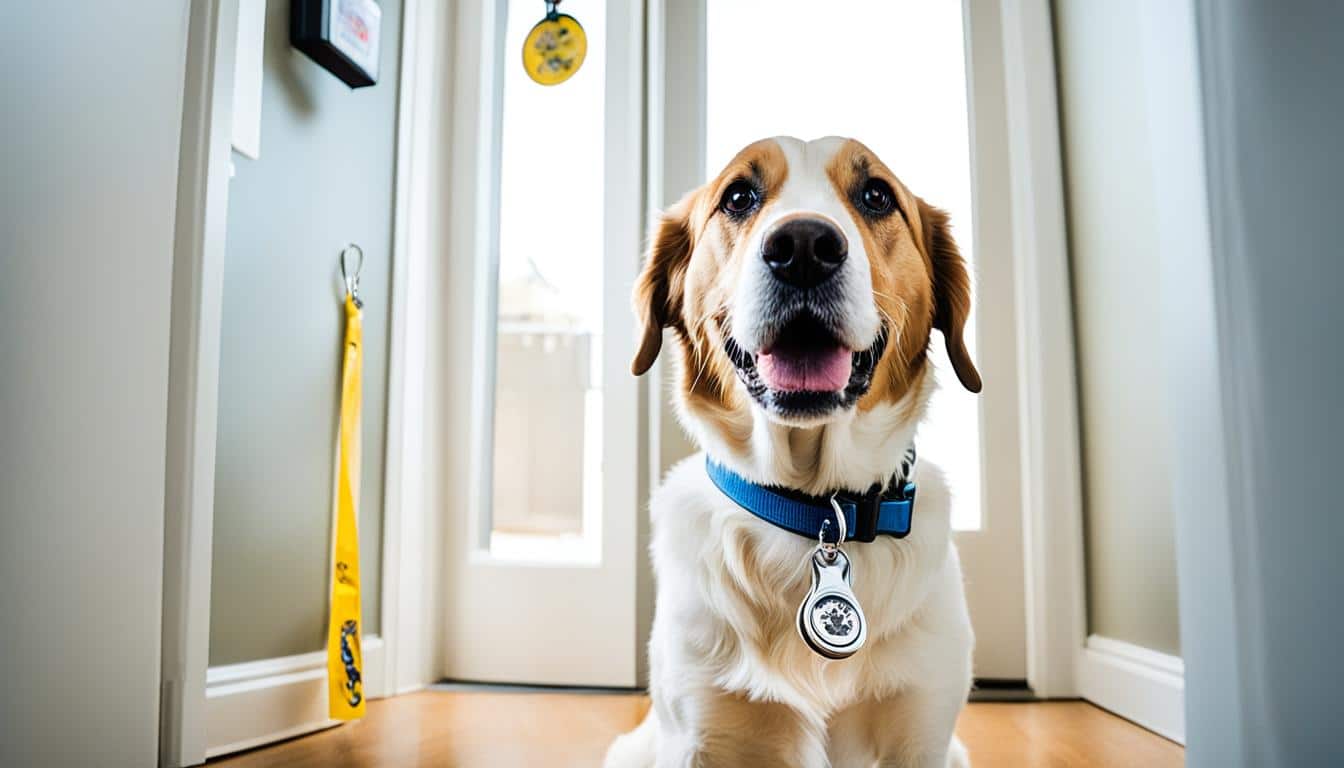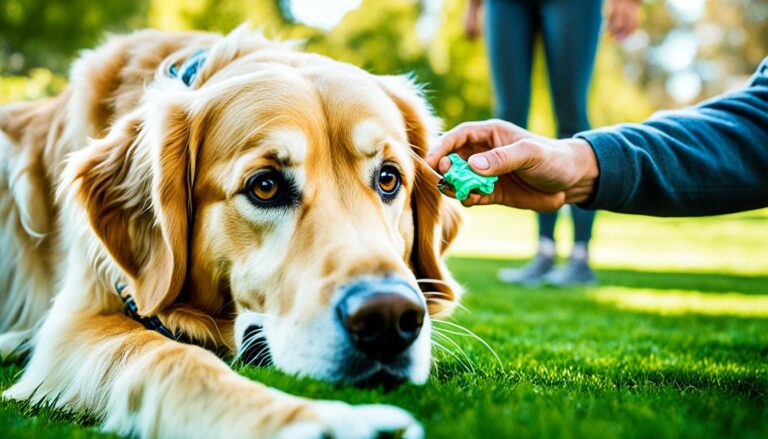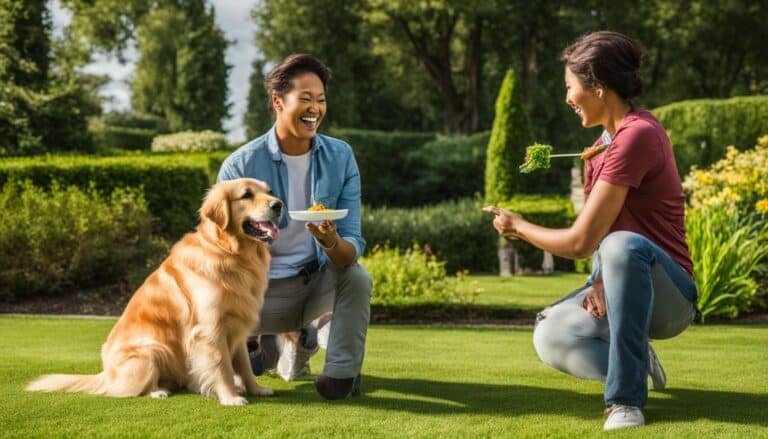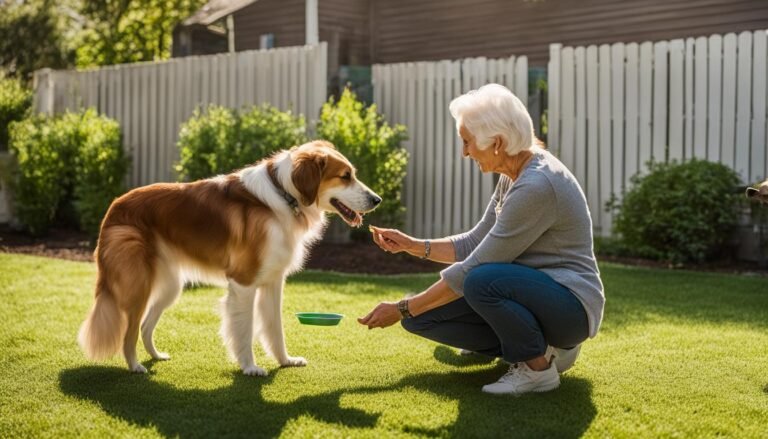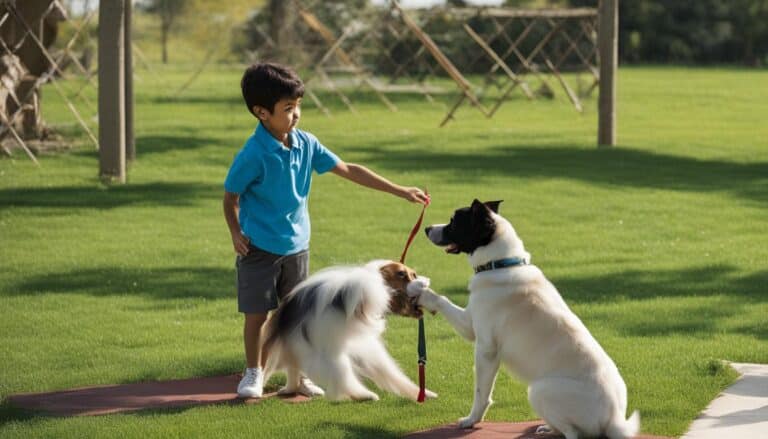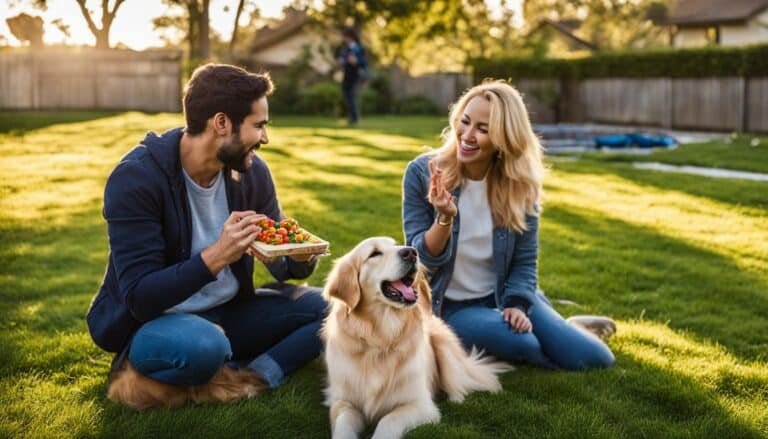Can You House Train an Older Dog?
House training an older dog can be a challenge, but with patience and consistency, it is definitely possible. Adopting an older dog comes with its own set of considerations, including potty training. Understanding the reasons why an older dog may need potty training is important in order to address any underlying issues.
In this article, you will discover tips and strategies for house training older dogs. Whether you have recently adopted an older dog or are struggling with potty training your long-time companion, this guide will provide you with the information you need to succeed.
Reasons an Older Dog May Need Potty Training
Potty training is not just for puppies. Older dogs may also require potty training for various reasons. Understanding these reasons is crucial in order to effectively address any potty training issues. Here are some common reasons why an older dog may need potty training:
- Old Habits from Previous Living Situations: If your older dog has lived in environments where they were not properly trained or had limited access to outdoor spaces, they may have developed habits that need to be addressed.
- Lack of Understanding of the Rules: Your older dog may not have been properly trained or received inconsistent training in the past, leading to confusion about where it’s appropriate to eliminate.
- Loss of Control Due to Age or Health Issues: Aging can affect a dog’s ability to control their bladder and bowels. Health conditions such as urinary incontinence or gastrointestinal disorders can also contribute to potty accidents.
- Discomfort from Arthritis: Arthritis can make it difficult for an older dog to reach the designated potty area in time, resulting in accidents.
- Fading Senses: As dogs age, their senses, including their sense of smell, may decline. This can affect their ability to recognize and respond to the cues associated with potty training.
- Cognitive Challenges: Cognitive decline, commonly seen in older dogs, can impact their ability to remember or understand the potty training process.
- Health Issues: Certain health conditions such as diabetes or kidney insufficiency may increase the frequency of urination and require more focused potty training.
To potty train an older dog, it is important to address these underlying issues and consult with a veterinarian for any necessary medical interventions. By understanding the reasons behind your older dog’s potty training needs, you can develop a tailored training plan to help them learn the appropriate behaviors and minimize accidents.
Tips for Potty Training an Older Dog
When it comes to potty training an older dog, you need to start from scratch and treat them as you would a new puppy. Here are some helpful tips to make the process easier:
- Choose a designated potty area: Select a specific spot in your yard or outside your apartment where you want your dog to do their business. This consistent location will help them understand where they should go.
- Schedule regular potty breaks: Set a routine for taking your older dog outside to relieve themselves. Take them out first thing in the morning, after meals, before bedtime, and at regular intervals throughout the day.
- Watch for signs: Pay attention to your dog’s behavior and look for signs that they need to go, such as pacing, sniffing the floor, or circling. When you notice these cues, immediately take them to the designated potty area.
- Consider crate training: Crate training can be a valuable tool in potty training an older dog. It teaches them to hold it until they are taken outside and gives them a secure space when you’re unable to supervise them closely.
- Accommodate physical challenges: If your older dog has any physical limitations, such as arthritis or mobility issues, make accommodations for them during potty breaks. Provide ramps or easy access to the designated area to ensure their comfort and safety.
- Reward their success: Positive reinforcement is key to successful potty training. When your older dog goes potty in the designated area, praise them enthusiastically and offer a high-value reward, such as a small treat or verbal praise.
Potty training an older dog may take time and patience, but with consistency and these tips, you can successfully teach them to go potty outside. Remember to be understanding and provide plenty of guidance throughout the process.
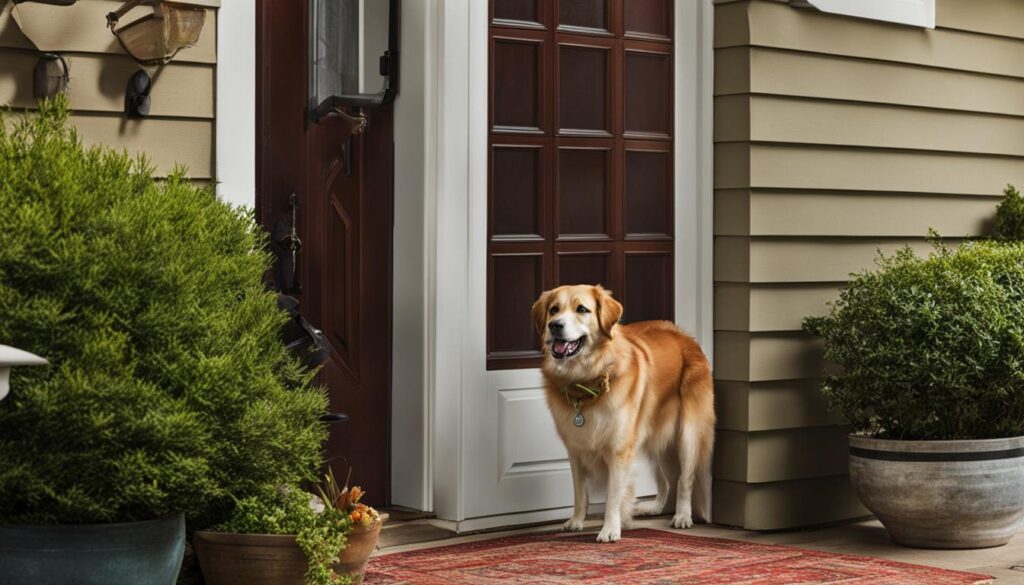
Establishing a Routine for Potty Training an Older Dog
Establishing a routine is crucial for successfully potty training an older dog. By implementing a consistent schedule, you can help your furry friend understand when and where to go for potty breaks. Here are some tips to create an effective routine:
- Feed your dog at regular times: Providing regular meals can help regulate their digestive system, making it easier to predict when they will need to go. Stick to a set feeding schedule to establish a routine for bathroom breaks.
- Take them outside after meals: After your dog finishes their meal, take them outside to their designated potty area. This will encourage them to eliminate outdoors and reinforce the desired behavior.
- First thing in the morning: As soon as you wake up, take your dog outside for a potty break. This will help them start their day on the right foot.
- Right before bedtime: Take your dog outside for a final potty break before bedtime. This will help prevent accidents during the night.
- Try again later: If your dog doesn’t go when you take them outside, put them back in their designated area and try again later. It’s important to be patient and consistent during this process.
Remember to use a leash when taking your dog outside for potty breaks. This will help keep them focused and increase the chances of them eliminating in the right spot. By establishing a routine and sticking to it, you’ll be well on your way to successfully potty training your older dog.
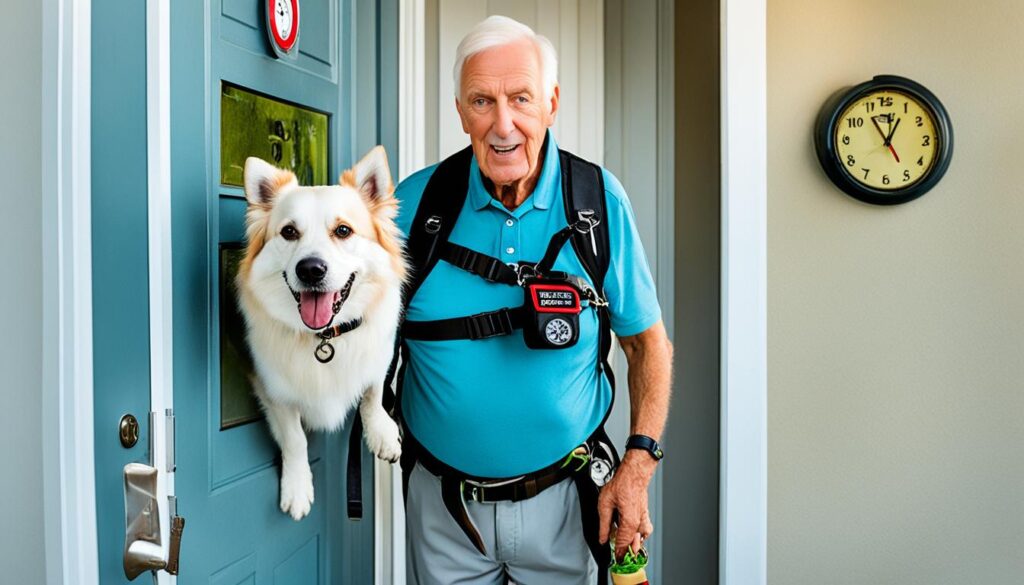
Managing Your Older Dog’s Potty Breaks
When it comes to potty training your older dog, effective management of their potty breaks is key. By providing the right environment and using appropriate tools, you can set your furry friend up for success.
One method of managing your older dog’s potty breaks is through supervision. Keep a close eye on your dog, especially during the initial stages of potty training. By closely monitoring their behavior, you can anticipate when they need to go and guide them to the designated potty area.
Another option is to use confinement in a crate or pen. Dogs naturally avoid eliminating in their sleeping area, so a crate can help create a space where they won’t want to go. Make sure the crate is appropriately sized, allowing enough room for them to stand, turn around, and lie down comfortably. Remember to gradually increase their freedom over time as they become more reliable with their potty training.
Tethering your dog to you with a leash is another way to manage their potty breaks. By keeping them close, you can closely monitor their behavior and quickly respond when they show signs of needing to go. This method is especially useful when you are unable to closely supervise your dog, such as during busy times or when you have guests.
Using a crate for potty training an older dog offers several benefits. The crate creates a safe and comfortable space for your dog and helps prevent accidents in the house. Additionally, dogs instinctively do not want to eliminate in their sleeping areas, making the crate a useful tool in teaching them to hold it and wait for their designated potty breaks.
As you manage your older dog’s potty breaks, it is important to make accommodations for any physical challenges they may have. For example, if your dog suffers from arthritis or mobility issues, consider providing easy access to the designated potty area or using indoor potty alternatives such as pee pads or fake grass. Tailoring their potty training routine to their specific needs will help ensure their comfort and success.
Remember, managing your older dog’s potty breaks is just one part of the overall potty training process. Consistency, patience, and positive reinforcement are also key factors in helping your furry friend become fully potty trained.
Rewarding and Reinforcing Good Behavior
When it comes to potty training an older dog, rewarding their success is an essential part of reinforcing good behavior. Positive reinforcement helps them understand what is expected of them and motivates them to continue making progress.
After your older dog goes in the correct spot, be sure to praise them enthusiastically. Use a happy tone of voice and provide physical affection, such as petting or belly rubs. This immediate positive feedback will help them associate going in the designated area with your approval and encouragement.
In addition to verbal praise, offering a high-value reward can further reinforce their good behavior. This can be a tasty treat that they love or a special toy that they enjoy playing with. The reward should be something they find highly desirable, motivating them to repeat the behavior in the future.
Remember, during the initial stages of potty training, it’s important to reward your dog consistently, every time they go in the correct spot. This helps them understand that this behavior is highly rewarding and encourages them to continue eliminating in the designated area.
As your older dog becomes more consistent in their potty training, you can gradually reduce the frequency of rewards. Once they are reliably going in the correct spot, you can transition to intermittent rewards. This means rewarding them only occasionally, but still often enough to maintain their motivation and reinforce the desired behavior.
Aside from treats and praise, it’s also beneficial to provide your older dog with a special 10-minute activity session following a successful potty break. This can be their favorite game, a short walk, or any activity they enjoy. Associating a fun and rewarding experience with going in the correct spot further strengthens their understanding and motivation to continue the good behavior.
Patience and Consistency in Potty Training an Older Dog
Potty training an older dog requires patience and consistency. While it may take longer for small and senior dogs to learn, with time and consistent effort, they can become fully potty trained. It’s important to remember that accidents may happen along the way, but scolding or punishing your dog can create confusion and hinder their progress. Instead, focus on the following tips to ensure a successful potty training journey:
Track Progress with a Housetraining Chart
Creating a housetraining chart will help you keep track of your dog’s progress. Documenting when and where they eliminate can provide valuable insights and help you identify any patterns or areas for improvement. Whether you opt for a physical chart or a digital one, ensure it’s easily accessible and updated regularly.
Stick to a Routine
Consistency is key when it comes to potty training. Establish a consistent routine by taking your dog outside at the same times each day, especially after meals, waking up, and before bedtime. By reinforcing a regular schedule, you’ll help your dog develop a better understanding of when and where they should go.
Use Positive Reinforcement
Reward your dog for successful potty breaks to reinforce good behavior. Praise them enthusiastically, offer a favorite treat, or even play with their favorite toy as a reward. By associating positive experiences and rewards with going potty in the right place, you’ll motivate your older dog to continue making progress.
Remember, potty training an older dog requires patience and consistency. Celebrate every milestone along the way, and don’t get discouraged by setbacks. With your dedication and the right approach, your older dog will soon become a pro at potty training!
Final Considerations for Potty Training an Older Dog
Potty training an older dog requires time, patience, and dedication. While most dogs can be successfully house trained, it’s essential to be aware of any signs of a medical issue that may be causing accidents. If your dog continues to have frequent accidents or struggles to understand potty training despite consistent efforts, it is highly recommended to consult with a veterinarian.
A veterinarian will be able to assess your dog’s health and determine if there are any underlying medical conditions contributing to the potty training challenges. Conditions such as urinary tract infections, kidney problems, or diabetes can impact a dog’s ability to control their bladder and bowel movements. Early detection and treatment of any medical issues are crucial for successful potty training.
Additionally, be attentive to your dog’s behavior and habits. If you notice any sudden changes in their bathroom habits, such as increased frequency, difficulty urinating or defecating, blood in the urine or stool, or signs of pain or discomfort, it’s important to consult with a veterinarian promptly. These could be indications of a medical problem that requires immediate attention.
Remember, potty training an older dog is a process that requires consistency and positive reinforcement. Stay patient and provide plenty of praise and rewards for successful potty breaks. Through consistent training and proper medical care, you can help your older dog become fully potty trained and strengthen the bond between you and your furry companion.
